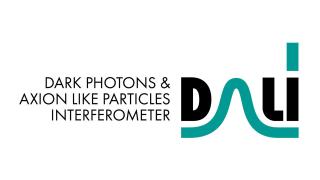Subvenciones relacionadas:
General
Nuestro proyecto puede dividirse en dos líneas principales de investigación. En primer lugar, el estudio de los vientos producidos por cuásares luminosos oscurecidos y del impacto que estos tienen en sus galaxias anfitrionas (retroalimentación del AGN). Para ello hemos obtenido observaciones infrarrojas y ópticas con los instrumentos del Gran Telescopio CANARIAS (GTC) CanariCam, EMIR y MEGARA, así como datos de ALMA en el rango milimétrico. Parte de esta investigación la realizamos en el marco de la Innovative Training Network BID4BEST, del programa H2020. Nuestro grupo está también fuertemente involucrado en el consorcio internacional GATOS (Galactic Activity, Torus and Outflow Survey), creado con el objetivo de conseguir tiempo en el JWST y ALMA para caracterizar el ciclo del gas y el material que oscurece el núcleo de galaxias activas cercanas. En segundo lugar, nuestra actividad se centra en la aplicación de la espectroscopia de campo integral al estudio de objetos extensos tales como galaxias con formación estelar o galaxias activas para investigar el encendido de ambos fenómenos. Asimismo, contribuimos al desarrollo de nuevos instrumentos y técnicas de análisis de datos relacionadas con la espectroscopia 3D. En particular, participamos en el desarrollo del espectrógrafo de campo integral de alta resolución HARMONI, uno de los instrumentos de primera luz del Extremely Large Telescope de la ESO.
Miembros
Resultados
-
Publicación de una letter en MNRAS donde estudiamos la conexión entre los vientos de gas ionizado y las poblaciones estelares jóvenes en el cuásar de tipo 2 Mrk 34 (Bessiere & Ramos Almeida 2022). Encontramos evidencias de retroalimentación positiva y negativa en distintas partes de la misma galaxia, inducidas por el viento. Este trabajo, parte del proyecto QSOFEED, abre una nueva ventana a la investigación del impacto directo de la actividad nuclear en la formación estelar en galaxias.
-
Publicación de un estudio detallado sobre la cinemática del gas ionizado y molecular templado en el cuásar de tipo 2 J0945+1737, parte de la muestra QSOFEED (Speranza et al. 2022). Encontramos evidencias de un viento de gas ionizado con un outflow mass rate máximo de 51 Msun/yr, y ausencia de su contrapartida de gas molecular templado.
-
La red europea H2020-ITN-2019 "Big Data Applications for Black Hole Evolution Studies" (BID4BEST) comenzó el 1 de marzo de 2020 (fecha de fin febrero 2024). La doctoranda Giovanna Speranza se unió a nuestro grupo en Septiembre de 2020.
-
La financiación externa conseguida por C. Ramos Almeida (452.000 euros) y B. García Lorenzo (700.000 euros) en el marco de este proyecto asciende a 1.152.000 euros. Estos fondos sólo incluyen aquellos proyectos cuya fecha de inicio es 2020 y posterior, y la mayor parte de ellos se ha invertido en la contratación de nuevo personal científico y técnico.
-
Publicación de los dos primeros artículos basados en la muestra de GATOS (García-Burillo et al. 2021; Alonso-Herrero et al. 2021). La colaboración GATOS ha obtenido dos propuestas aprobadas en el Ciclo 1 del JWST, lideradas por D. Rosario (University of Newcastle, Reino Unido) y Taro Shimizu (MPE, Alemania).
-
Publicación de un estudio sobre morfología y cinemática del gas molecular frío de una muestra de cuásares de tipo 2 (QSO2s) a z=0.1 (Ramos Almeida et al. 2022). Para ello se hizo uso de datos del interferómetro ALMA en el rango milimétrico. Este trabajo es parte del proyecto QSOFEED.
-
Publicación del trabajo García-Lorenzo et al. (2022), en el cual se presenta un análisis de las capacidades de HARMONI para desentrañar las propiedades morfo-cinemáticas de las galaxias anfitrionas de AGN en el llamado "mediodía cósmico".
![Teacup en [O III] y CO(2-1) Los agujeros negros supermasivos modifican la distribución de gas molecular en la región central de las galaxias. Crédito: HST y C. Ramos Almeida.](/sites/default/files/styles/crop_rectangle_21x9_to_1280/public/images/project/teacup_english.001.jpeg?itok=82L9Wkcf)








